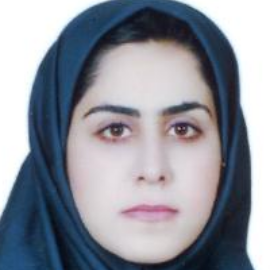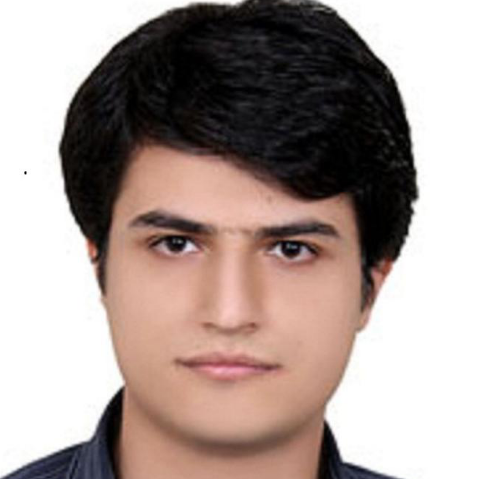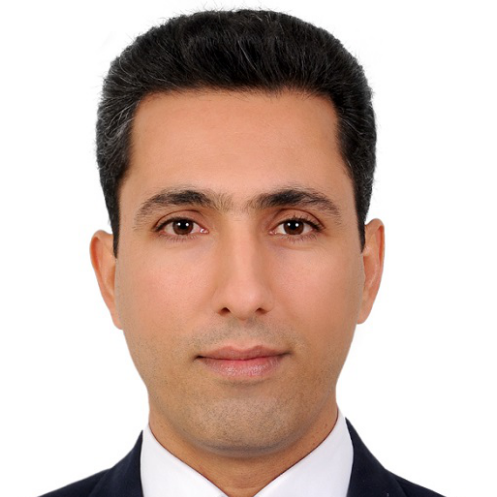International Journal of Intelligent Systems and Applications (IJISA)
IJISA Vol. 11, No. 10, 8 Oct. 2019
Cover page and Table of Contents: PDF (size: 553KB)
Prediction of Performance Point of Semi-Rigid Steel Frames Using Artificial Neural Networks
Full Text (PDF, 553KB), PP.42-53
Views: 0 Downloads: 0
Author(s)
Index Terms
Artificial neural networks, prediction, semi-rigid connection, steel structures, performance point
Abstract
One of the main steps in the performance based seismic analysis and design of structures is determination of performance point where the nonlinear static analysis approach is used. The aim of this paper is to predict the performance point of semi-rigid steel frames using Artificial Neural Networks. As such, to generate data required for the prediction, several semi-rigid steel frames were modeled and their performance point was determined then. Ten input variables including number of bays, number of stories, bays width, moment of inertia of beams, cross sectional area of columns, cross sectional area of braces, rigidity degree of connections and soft story (existence or nonexistence) were considered in the prediction. In addition, the actual results were obtained at the presence of different earthquake intensity levels and soil types. Back Propagation with eleven different algorithms and Radial Basis Function Artificial Neural Networks were used in the prediction. The prediction process was carried out in two steps. In the first step, all samples were used for the prediction and the performance metrics were computed. In the second step, three of the best networks were selected, and the optimum number of samples was found considering a very slight reduction in the accuracy of the networks used. Finally, it was shown that, despite using rather limited number of samples, the generated Artificial Neural Networks accurately predict the performance point of semi-rigid steel frames.
Cite This Paper
Zahra Bahmani, Mohammad R. Ghasemi, Seyed S. Mousaviamjad, Sadjad Gharehbaghi, "Prediction of Performance Point of Semi-Rigid Steel Frames Using Artificial Neural Networks", International Journal of Intelligent Systems and Applications(IJISA), Vol.11, No.10, pp.42-53, 2019. DOI:10.5815/ijisa.2019.10.05
Reference
[1]SK. Kunnath, “Performance-based seismic design and evaluation of building structures,” in Earthquake engineering for structural design, W. F. Chen, Editor, CRC Press. 1–55, 2005.
[2]SEAOC, “Performance based seismic engineering of buildings,” in Structural Engineers Association of California, Vision 2000 Committee, Sacramento, California, 1995.
[3]ATC40, “Seismic evaluation and retrofit of concrete buildings,” in Applied Technology Council, California Seismic Safety Commission, 1997.
[4]FEMA. “Pre standard and commentary for the seismic rehabilitation of buildings (FEMA–356),” in Federal Emergency Manage Agency, American Society of Civil Engineers, Washington, 2000.
[5]AH. Gandomi, DA. Roke, “Assessment of artificial neural network and genetic programming as predictive tools,” Adv Eng Softw, Vol. 88: pp.63–72, 2015.
[6]S. Gharehbaghi, H. Yazdani, M. Khatibinia, “Estimating inelastic seismic response of reinforced concrete frame structures using a wavelet support vector machine and an artificial neural network,” Neural Comp Appl, pp.1–14, 2019.
[7]H. Adeli, “Neural networks in civil engineering: 1989–2000,” Comp-Aided Civil Inf Eng, Vol. 16, No.2, pp. 126–142, 2001.
[8]S. Gharehbaghi, AH. Gandomi, S. Achakpour, MN. Omidvar, “A hybrid computational approach for seismic energy demand prediction,” Expert Sys Appl, vol. 110: pp. 335–351, 2018.
[9]S. Gharehbaghi, M. Khatibinia, “Optimal seismic design of reinforced concrete structures under time-history earthquake loads using an intelligent hybrid algorithm,” Earthq Eng Eng Vib, Vol. 14, No. 1, pp. 97–109, 2015.
[10]H. Adeli, SL. Hung, Machine learning: neural networks, genetic algorithms, and fuzzy systems, John Wiley & Sons, Inc., 1994.
[11]M. Ahmadi, H. Naderpour, A. Kheyroddin. “Utilization of artificial neural networks to prediction of the capacity of CCFT short columns subject to short term axial load,” Arch Civil Mech Eng, Vol. 14, No.3, pp. 510–517, 2014.
[12]S. Gholizadeh, M. Mohammadi, “Reliability-based seismic optimization of steel frames by metaheuristics and neural networks,” ASCE-ASME J Risk Uncer Eng Sys, Part A: Civil Eng, Vol. 3, No. 1: 04016013–1–11, 2017.
[13]E. Salajegheh, S. Gholizadeh, “Optimum design of structures by an improved genetic algorithm using neural networks,” Adv Eng Softw, Vol. 36, No.11, pp. 757–767, 2005.
[14]E. Salajegheh, S. Gholizadeh, M. Khatibinia, “Optimal design of structures for earthquake loads by a hybrid RBF-BPSO method,” Earthq Eng Eng Vib, Vol. 7, No. 1, pp. 13–24, 2008.
[15]E. Salajegheh, A, Heidari, “Optimum design of structures against earthquake by wavelet neural network and filter banks,” Earthq Eng Struct Dyn, Vol. 34, No. 1, pp. 67–82, 2005.
[16]SM. Seyedpoor, J. Salajegheh, E. Salajegheh, S. Gholizadeh, “Optimum shape design of arch dams for earthquake loading using a fuzzy inference system and wavelet neural networks,” Eng Optimization, Vol. 41, No. 5, pp. 473–493 2009.
[17]X. Wu, J. Ghaboussi, JH. Garrett, “Use of neural networks in detection of structural damage,” Comput Struct, Vol. 42, No. 4, pp.649–659, 1992.
[18]H. Yazdani, M. Khatibinia, S. Gharehbaghi, K. Hatami, “Probabilistic performance-based optimum seismic design of RC structures considering soil-structure interaction effects,” ASCE-ASME J Risk Uncer Eng Sys, Part A: Civil Eng, Vol. 3, No.2, G4016004–1–11, 2017.
[19]H. Adeli, A. Karim, “Neural network model for optimization of cold-formed steel beams,” J Struct Eng, Vol. 123, No. 11, pp. 1535–1543, 1997.
[20]S. Gholizadeh, E. Salajegheh. “Optimal seismic design of steel structures by an efficient soft computing based algorithm,” J Const Steel Research, Vol. 66, No. 1, pp. 85–95 2010.
[21]A. Panakkat, H. Adeli, “Recurrent neural network for approximate earthquake time and location prediction using multiple seismicity indicators,” Comp-Aided Civil Inf Eng, Vol. 24, No. 4, pp. 280–292, 2009.
[22]H. Naderpour, A. Kheyroddin, GG. Amiri, “Prediction of FRP-confined compressive strength of concrete using artificial neural networks,” Composite Struct, Vol. 92, No. 12, pp. 2817–2829, 2010.
[23]AH. Alavi, AH. Gandomi, “Prediction of principal ground-motion parameters using a hybrid method coupling artificial neural networks and simulated annealing,” Comput Struct, Vol. 89, No. 23, pp.2176–2194, 2011.
[24]ND. Lagaros, M. Papadrakakis, “Neural network based prediction schemes of the non-linear seismic response of 3D buildings,” Adv Eng Softw, Vol. 44, No. 1, pp.92–115, 2012.
[25]S. Gholizadeh, “Performance-based optimum seismic design of steel structures by a modified firefly algorithm and a new neural network,” Adv Eng Softw, Vol. 81, pp. 50–65, 2015.
[26]A. Heidari, M. Hashempour, and D. Tavakoli, “Using of backpropagation neural network in estimating of compressive strength of waste concrete,” Soft Comp Civil Eng, Vol. 1, No. 1, pp. 54–64, 2017.
[27]GM. Kotsovou, DM. Cotsovos and ND. Lagaros, “Assessment of RC exterior beam-column Joints based on artificial neural networks and other methods,” Eng Struct, Vol. 144, pp. 1–18, 2017.
[28]A. Azizinamini, JB. Radziminski, “Static and cyclic performance of semirigid steel beam-to-column connections,” J Struct Eng, Vol. 115, No. 12, pp. 2979–2999, 1989.
[29]MN. Nader, A. Astaneh, “Dynamic behavior of flexible, semirigid and rigid steel frames,” J Const Steel Research, Vol. 18, No.3, pp.179–192, 1991.
[30]AS, Elnashai, AY, Elghazouli, “Denesh-Ashtiani FA. Response of semirigid steel frames to cyclic and earthquake loads,” J Struct Eng, Vol. 124, No. 8, pp. 857–867, 1998.
[31]JC. Awkar, EM. Lui, “Seismic analysis and response of multistory semirigid frames,” Eng Struct, Vol. 21, No. 5, pp. 425–441, 1999.
[32]HR. Valipour, MA. Bradford, “Nonlinear P- analysis of steel frames with semi-rigid connections,” Steel Composite Struct, Vol. 14, No. 1, pp. 1–20, 2013.
[33]PC. Nguyen, SE. Kim, “Nonlinear inelastic time-history analysis of three-dimensional semi-rigid steel frames,” J Const Steel Research, Vol. 101, pp. 192–206, 2014.
[34]M. Razavi, A. Abolmaali, “Earthquake resistance frames with combination of rigid and semi-rigid connections,” J Const Steel Research, Vol. 98, pp.1–11, 2014.
[35]Y. Yu, X. Zhu, “Nonlinear dynamic collapse analysis of semi-rigid steel frames based on the finite particle method,” Eng Struct, Vol. 118, pp. 383–393. 2016.
[36]I. Faridmehr, MM. Tahir, T. Lahmer, and MH. Osman. “Seismic performance of steel frames with semirigid connections,” J Eng, Vol. 2017, pp. 1–10, 2017.
[37]A. Pirmoz, MM. Liu, “Direct displacement-based seismic design of semi-rigid steel frames,” J Const Steel Research, Vol. 128, pp. 201–209, 2017.
[38]E. Kameshki, M. Saka, “Genetic algorithm based optimum design of nonlinear planar steel frames with various semi-rigid connections,” J Const Steel Research, Vol. 59, No.1 pp. 109–134, 2003.
[39]AV. Oskouei, SS. Fard, and O. Aksogan, “Using genetic algorithm for the optimization of seismic behavior of steel planar frames with semi-rigid connections,” Struct Multidiscip Optimization, Vol. 45, No. 2, pp. 287–302, 2012.
[40]M. Yassami, P. Ashtari, “Using fuzzy genetic algorithm for the weight optimization of steel frames with semi-rigid connections,” Int J Steel Struct, Vol. 15, No. 1, PP. 63–73, 2015.
[41]A. Nassar, H. Krawinkler, “Seismic demands for SDOF and MDOF systems,” John A. Blume Earthquake Engineering Center, Report 95, Dept. of Civil Engineering, Stanford University, 1991.
[42]H. Erdem, “Prediction of the moment capacity of reinforced concrete slabs in fire using artificial neural networks,” Adv Eng Softw, Vol. 41, No. 2, pp. 270–276, 2010.
[43]S. Gholizadeh, E. Salajegheh, “Optimal design of structures subjected to time history loading by swarm intelligence and an advanced metamodel,” Comput Meth Appl Mech Eng, Vol. 198, No. 37, pp. 2936–2949, 2009.
[44]N. Karabutov, “Structural identification of dynamic systems with hysteresis,” Int J Intel Sys Appl, Vol. 8, No. 7, pp. 1–13, 2016.
[45]H. Fathnejat, P. Torkzadeh, E. Salajegheh, and R. Ghiasi, “Structural damage detection by model updating method based on cascade feed-forward neural network as an efficient approximation mechanism,” Int J Optimization Civil Eng, Vol. 4, No. 4, pp. 451–472, 2014.
[46]A. Iranmanesh, A. Kaveh, “Structural optimization by gradient base neural networks,” Int J Num Meth Eng, Vol. 46, pp. 297–311, 1999.
[47]A. Kaveh, HA. Khalegi, “Prediction of strength for concrete specimens using artificial neural network,” Asian J Civil Eng, Vol. 2, No. 2, pp. 1–13, 2000.
[48]A. Kaveh, Y. Gholipour, and H. Rahami, “Optimal design of transmission towers using genetic algorithm and neural networks,” Int J Space Struct, Vol. 23, No. 1, pp. 1–19, 2008.
[49]FR. Rofooei, A. Kaveh, and F. Masteri Farahani, “Estimating the vulnerability of concrete moment resisting frame structures using artificial neural networks,” Int J Operat Research, Vol. 1, No. 3, pp. 433–448, 2011.
[50]D. Faouzi, N. Bibi-Triki, B. Draoui, A. Abène, "Modeling a fuzzy logic controller to simulate and optimize the greenhouse microclimate management using MATLAB SIMULINK", Int J Math Sci Comput, Vol. 3, No. 3, pp. 12-27, 2017.
[51]S. Aktar, MA Kawser, "Asymptotic solutions of a semi-submerged sphere in a liquid under oscillations", Int J Math Sci Comput, Vol. 4, No. 3, pp.66–79, 2018.
[52]D. Rumelhart, G. Hinton, and R. Williams, Learning internal representations by error propagation, Parallel Distributed Processing, 1: 318–362 MIT Press, Cambridge,1986.
[53]DS. Broomhead, D. Lowe, Radial basis functions, multi-variable functional interpolation and adaptive networks, Royal Signals and Radar Establishment Malvern (United Kingdom), 1988.
[54]F. Girosi, T. Poggio, and B. Caprile, “Extensions of a theory of networks for approximation and learning: outliers and negative examples,” Adv Neural Info Proc Sys, 1991.
[55]EJ. Hartman, JD. Keeler, and JM. Kowalski, “Layered neural networks with Gaussian hidden units as universal approximations,” Neural Comput, Vol. 2, No. 2, pp. 210–215, 1990.
[56]PD. Wasserman. Advanced methods in neural computing, John Wiley & Sons, Inc, 1993.
[57]SAP2000: Integrated finite element analysis and design of structures, Computers and Structures, Berkeley, California.
[58]Standard No. 2800 (2007). Iranian code of practice for seismic resistant design of buildings, Building and Housing Research Center, 3rd Edition, Iran.



